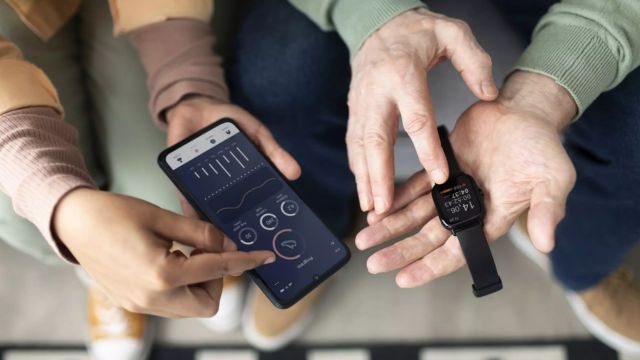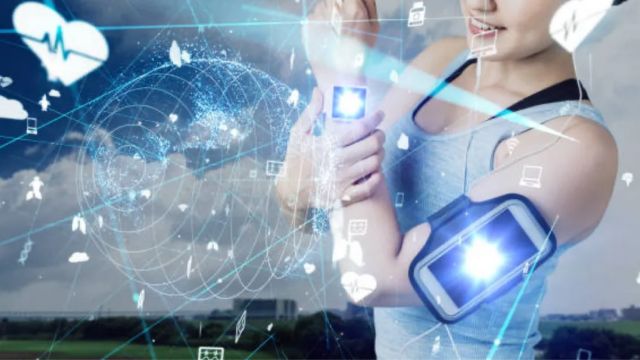By improving patient monitoring and management of their health, the development of wearable medical devices is changing healthcare. From fitness trackers to more sophisticated health monitoring tools, these devices are transforming patient care and opening the path for a more proactive strategy of health management. It is evident as wearable technology develops that this trend marks a basic change in the delivery of healthcare, not only a passing phase.
What are Wearable Medical Devices?
Wearable medical gadgets are electronic tools meant for body wear-on. Monitoring vital signs, tracking physical activity, and giving real-time data to patients and medical practitioners among other health-related uses call for them. Among some typical examples are blood glucose monitors, heart rate monitors, sleep trackers, and even wearable ECG monitors.
How Wearable Devices are Changing Healthcare

Wearable technology’s incorporation into healthcare has brought many advantages for patients as well as for healthcare professionals. These are some notable ways wearable technologies are revolutionizing healthcare:
1. Real-Time Monitoring and Early Detection
Wearable medical devices provide continuous monitoring of health metrics, such as heart rate, blood pressure, blood sugar levels, and oxygen saturation. The ability to track these parameters in real-time enables early detection of potential health issues, often before symptoms arise. For example, wearables that track blood sugar levels can alert diabetics to rising glucose levels, preventing severe complications.
2. Empowering Patients and Personalized Care
One of the most significant advantages of wearable medical devices is the empowerment they offer patients. By giving individuals direct access to their health data, wearables help patients make informed decisions about their health. They also enable personalized care. Healthcare providers can use data from wearables to tailor treatments and make adjustments based on real-time information, resulting in more effective and targeted interventions.
3. Improving Chronic Disease Management
Chronic diseases such as diabetes, heart disease, and hypertension require continuous monitoring and management. Wearable devices allow for constant tracking, which can improve the patient’s quality of life and reduce hospital visits. For example, a wearable ECG device can monitor heart conditions in real-time, sending data to doctors, who can make immediate recommendations based on the findings.
4. Enhancing Medication Adherence
For patients with chronic illnesses who require long-term medication, adherence to prescribed treatments can often be a challenge. Wearable devices, such as those with integrated reminders and notifications, can improve medication adherence. These devices can remind patients when it’s time to take their medications, helping them stay on track and avoid complications.
5. Reducing Healthcare Costs
With the ability to detect issues early and manage chronic diseases more effectively, wearable medical devices can help reduce healthcare costs. Early detection leads to earlier interventions, often preventing the need for expensive emergency care or long-term treatments. Additionally, the reduction in hospital visits and better chronic disease management can significantly lower healthcare expenses over time.
The Future of Wearable Medical Devices
As we look to the future of wearable medical devices, there are a few trends and innovations that are likely to shape the industry.
1. Integration with Artificial Intelligence (AI)
AI is poised to play a significant role in wearable medical devices. By integrating AI with wearables, healthcare providers can gain deeper insights from the data collected. AI can assist in analyzing vast amounts of health data, identifying trends, and predicting potential health risks. This could lead to even more personalized healthcare and proactive interventions.
2. Advanced Sensors and Biometric Monitoring
The next generation of wearable devices will feature more advanced sensors capable of monitoring a broader range of biometrics. From monitoring hydration levels to detecting early signs of illness, the possibilities for more comprehensive health tracking are vast. Wearable devices may soon be able to track biomarkers in sweat, breath, or even skin temperature to give a fuller picture of a person’s health.
3. Improved Battery Life and Design
Battery life and device design will continue to improve. Wearables with longer battery lives and more comfortable designs will encourage greater adoption among patients. As these devices become sleeker, more comfortable, and less obtrusive, users are more likely to wear them consistently, thus improving the accuracy and reliability of the data.
4. 5G Connectivity for Faster Data Transfer
With the advent of 5G technology, wearable medical devices will become more connected than ever before. Faster data transfer will allow for seamless communication between the wearables and healthcare providers. This means doctors will have access to real-time data, enabling them to make decisions quickly and remotely. The 5G network will further enhance telemedicine capabilities, expanding access to healthcare in underserved areas.
5. Broader Adoption of Wearables in Healthcare Settings
In the near future, wearable devices will likely become a standard part of healthcare settings. Hospitals and clinics will adopt these devices for in-patient monitoring and outpatient care, further integrating them into healthcare delivery. Wearables may even become a standard tool in preventive care programs, helping to detect potential health problems in the early stages.
Conclusion
The future of wearable medical devices holds great promise. These devices are revolutionizing the way healthcare is delivered by enabling real-time monitoring, empowering patients, and improving chronic disease management. As technology advances, we can expect even more sophisticated devices that will allow healthcare providers to offer more personalized and proactive care. Wearables are not just the future of healthcare — they are transforming it right now.
Stay informed on the latest in medical technology, clinical engineering, and medical supplies. At J & J Supplies, we provide valuable resources and updates to help you stay ahead of the curve. Whether you’re looking for industry news or expert insights, we are here to keep you informed. Sign up for our newsletter today for the latest updates and more.
Frequently Asked Questions (FAQs)
What types of wearable medical devices are available today?
Wearable medical devices come in various forms, such as fitness trackers, heart rate monitors, glucose meters, sleep trackers, and ECG monitors. These devices are used for monitoring vital signs, tracking physical activity, and even detecting early signs of health issues.
How can wearable medical devices help with chronic disease management?
Wearable devices enable continuous monitoring of conditions such as diabetes, hypertension, and heart disease. This constant tracking helps patients and healthcare providers adjust treatments proactively, preventing complications and reducing hospital visits.
Are wearable medical devices safe for everyday use?
Yes, wearable medical devices are generally safe when used according to manufacturer guidelines. However, it’s important to choose devices that are FDA-approved and regularly calibrate them for accuracy.
Will wearable medical devices replace traditional doctor visits?
While wearable devices provide valuable real-time data, they are not intended to replace doctor visits. They are designed to complement traditional healthcare by providing continuous monitoring and early detection of potential issues.
What is the future of wearable medical technology?
The future includes advanced sensors, AI integration for personalized care, improved battery life, and 5G connectivity, which will allow for faster data transfer and better remote healthcare services. The technology will continue to evolve to offer more comprehensive health tracking and care management.








